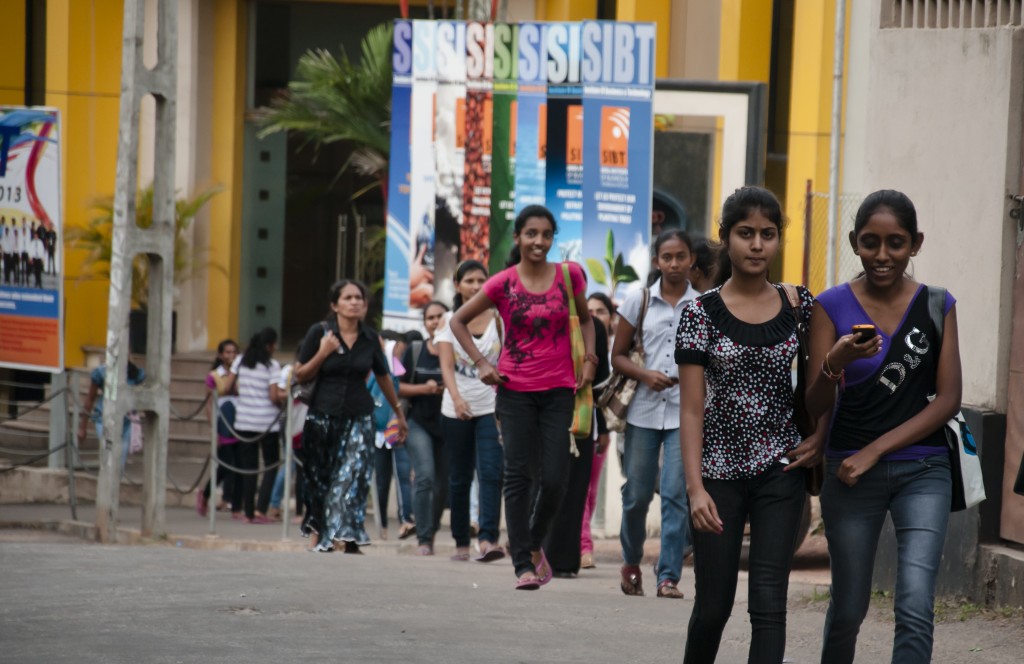Photo by The Picture Press, featured in 30 Years Ago
As I emphasized in my previous article, never in our lifetime will we be presented with ideal alternatives. However, as citizens of Sri Lanka, we have a moral responsibility to vote pragmatically on the 8th of January. To this end, having read Presidential candidate Hon. Maithripala Sirisena’s election manifesto, I thought of sharing my thoughts on the plans relating to education outlined in this document through Facebook. Of course, I do appreciate that the manifesto is a blueprint and that policy planners would certainly look into these matters at the implementation stage, assuming of course that the forthcoming election is not rigged. Initially, I thought of presenting a comparison of the content in Hon. Maithripala Sirisena’s Manifesto and that presented by President Mahinda Rajapaksa. However, I later felt that comparing a document which could potentially be operationalized to uplift the country against a document containing a bunch of promises which have been proven beyond reasonable doubt to lack credibility would be a mere waste of time.
According to the manifesto, public education expenditure will be raised from the present 1.7 percent to 6 percent (of GDP). The policies relating to education include, among others, a regulatory system through which it is hoped to eliminate delays in admitting children to schools; breaking up schools into primary, junior secondary and advanced level ones to reduce the intense competition for admission to the better schools; a supervisory mechanism through which the activities of international schools come under the purview of the state; doubling university admissions and enabling those students who fail to gain admission to universities to study for a degree or a higher diploma by introducing a concessionary higher education loan scheme are some of the most prominent policies. Given that human capital is a powerful engine for development, a fundamental restructuring of the education system which can support the accumulation of human capital is the only way forward.
While the proposed reforms relating to the school education sector are commendable, my focus is on the suggested reforms to the tertiary education system. I admire the bold plan to introduce a higher education loan scheme, whereby students will be obliged to repay the cost of their education to the government upon finding employment. Although my understanding is that these fees will only apply to those who do not obtain the threshold marks needed for university admission, this is a means of improving availability of and access to education to thousands of students who were hitherto denied the opportunity.
The primary duty of a university student should be to excel academically, rather than engaging in petty politics or harassing junior students. The introduction of such fees presents students with an obligation students and would hopefully motivate them to expend more effort on studying. However, if one is to expect students to be willing to pay for their education, there is a definite need for quality improvement. This is because students who fail to gain admission to a national university have a range of alternative opportunities for obtaining tertiary qualifications through private institutions. Hence, the revenue from such a loan scheme should be utilized to improve the poor quality of education and facilities in Sri Lankan universities.
One is often astounded by the range of facilities and the support system available for university students of developed countries. In spite of all these facilities, the numbers of university graduates who enter the job market each year in many developed countries is often lower than expected. If given access to world class education, students in our universities would literally take on the world.
Restructuring the tertiary education system would also be a means of improving Sri Lanka’s pathetic research record. University teachers in the humanities and social sciences faculties of Sri Lankan universities had a mere 0.23 international publications per faculty member over a five year period while the number of national publications was 0.7 per faculty member.* Digressing from my main discussion, I must add that these the world outside Sri Lanka knows very little, if anything, about these “national” publications. According to the World Bank, Sri Lanka has a mere 103 researchers per 1 million people, which, when compared to other countries with a similar level of human development (as measured by the UNDP’s Human Development Index) is alarmingly low. For instance, Brazil has 710 researchers per 1 million people, in Mexico this number is 386, in Turkey it is 987, while in Ukraine it is 1253 (see here).
To be fair, I do not believe the present regime is wholly to blame for the woes of the tertiary education system. Successive governments that held power since independence contributed towards the dwindling quality of the education sector in general. While many government have taken great pride in the free education system, what is provided free is not necessarily of good quality. If anything, there has been a marked drop in the quality of education at all levels over time.
It should be noted however, that the utter infatuation with physical capital development displayed by the present regime has led to the problems relating to the education sector reaching a critical stage. Of course, the only criterion the present regime uses for selecting projects is the amount that can be misappropriated. The project that gives them the highest commission/bribe/slice is the one which is selected. As it is quite hard to misappropriate funds in projects aimed improving human capital, such activities rarely get priority. I must say that it is indeed a very creative approach to cost benefit analysis!
Sources
- Gamage, S.N. (2005), “An assessment of the quality of faculty in humanities and social sciences in the public university system in Sri Lanka”, Journal of the University Librarians Association of Sri Lanka, Vol. 9, pp. 1-11.
